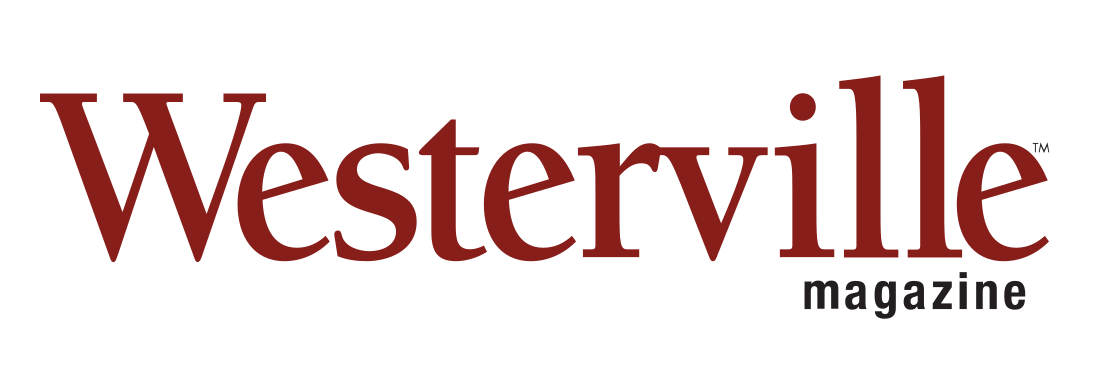
Her voice chokes up and she starts crying. We can’t speak in person, so we settle for a phone conversation.
“It sucks, it really sucks,” says Jami Goldstein, vice president of marketing, communications and events for the Greater Columbus Arts Council. “There was such an outpouring of kind words for the decision, but I do think there was a collective sadness that settled on Columbus that day.”
Goldstein and the GCAC team knew canceling the 59th annual Columbus Arts Festival was necessary; it will protect the nearly 300 artists across 38 states and four countries, along with the 500,000 festival patrons. Still, GCAC hasn’t let COVID-19 deter it from its mission to support artists and the arts.A couple of days after the economic shut- down and before it announced the festival cancelation, GCAC launched its COVID-19 Emergency Relief for Artists grant – an impressive program since, Goldstein says, out of roughly 4,000 local arts councils across the U.S., fewer than half provide grants.
The program is non-competitive and designed for Franklin Country artists of all disciplines who depend on shows, teaching classes, exhibits and more for their livelihood.
“We’re valuing each application on its merit and then making awards,” saysGoldstein. “We regularly hear from artists that the support they get in Columbus through grants like this is something that makes Columbus very special.”
The grants are made possible thanks to GCAC and the many donors ranging from residents to large companies; Equi- tas Health donated $25,000. Within the program’s first month, GCAC distributed approximately $200,000 to more than 250 artists, and the testimonials from awarded artists are touching.
Xantha Ward had a fashion show can- celed and a boutique closed, but the grant money will help Ward through another month of bills and rent. Kate Aumuller had to to stop teaching classes at the Columbus Museum of Art and Art Possible Ohio, but wants to use the grant to teach pottery virtually. Christina Paolucci, a full-time photographer and documentary filmmaker, was unable to qualify for un- employment or a small busi- ness administration loan, but the GCAC grant kept her sus- tainable. And Moxy Martinez, a local musician, can continue writing and producing thanks to the grant money.
“When I opened the email and read that I was an app- roved recipient, I cried so many tears of deep apprecia- tion and gratefulness,” Mar- tinez says. “Being awarded this emergency relief money has made me feel so fully supported and seen as a relevant contributor to our arts community.”
Canceled but Not Forgotten
Each year, the Columbus Arts Festival grows, so it’s no surprise that the 2020 event was going to be big. It was set to welcome a booth in partnership with Ohio Prison Arts Connection that would have highlighted artwork by Ohio prisoners, a zero waste party in line with the festival’s Green Initiative, a Rhinegeist Beer Garden, the Family Film Night at the Fest presented by Gateway Film Center and more.Of course, the main attraction is al- ways the artists. In response to the can- celation, GCAC promised each artist a booth at the 2021 event. Still, the financial and marketing opportunities no longer available for these artists is potentially devastating.
Emerging Artist Lindsay Boyd and long- time festival artist Kate Morgan might have different
levels of experience with the Arts Festival, but their struggles are similar.For the past eight years, Boyd has created and sold clay models called Spirit Slabs, in- spired by architectural detail at The Ohio State University. The business idea came to her when she needed a gift for her par- ents, who love Buckeye football. Now, it’s expanding to slabs inspired by Columbus- wide architecture and beyond.
Although an Emerging Artist, Boyd isn’t a complete stranger to the Arts Festival. She participated in the Big Local Arts Tent for a few years before learning about Emerging Artists, a program that helps artists new to presenting works at the festival.
“At the conclusion of the festival each year, my mom would strongly encourage me to apply for the program the following year. I thought to myself, I’d never know until I applied,” Boyd says. “I was so excited and shocked when I was accepted. It gave me confidence as a fine artist that I never expected to have.”
Boyd says she mentally prepared herself for the cancellation but was still disap- pointed. She was worried about maintain- ing her Emerging Artists status for 2021, but GCAC announced that the title and benefits will roll into next year.

Boyd remains optimistic, saying she has more time to create new slabs for 2021 and is lucky to maintain her full-time job as a graphic designer. Still, her heart goes out to artists who rely on the festival for income, such as Morgan.
For almost 10 years, Morgan has participated in the Arts Festival, selling her collage paintings inspired by folklore, mythology and the human form. As a full-time traveling artist, Morgan is worried about the event and client commission cancelations due to rising unemployment. She says she may have to find another job.
“I’m really struggling with mentally changing what I’m supposed to be doing,” Morgan says. “Right now, I’ve sold a little bit, and that’s all I’m holding onto because that’s all I have.”
Morgan started selling her work to help pay her student loans, and in 2012, she was an Emerging Artist. Last year, she attended 30 shows, but this year might be a wash.
In mid-March, Morgan had recently returned from Spain, where she witnessed the rising intensity of COVID-19. She recalls thinking, “Oh shit, I bet shows aren’t going to happen,” and then the Arts Festival was canceled. She says the news hurt and made the virus more real.
“Columbus is one of my best shows. It’s one of my favorites because of the people and it’s hometown,” Morgan says. “That one hit hard, and me and a couple of my friends always look forward to Columbus since we live in all different parts of the country. It’s like a little community within a community.”Morgan is still creating artwork, exploring new methods, accepting commissions and maintaining herEtsy shop. Since she can’t work from her Columbus Idea Foundry studio, her living room is stepping up to the challenge of storing endless art material.
“I’ve had a difficult time translating the creative time and space to my living room,” she says. “I find myself jumping from project to project and not finishing and walking away.”

As for maintaining a full-time job as an artist, she’s still unsure. Thankfully, she and her artist friends are staying in touch and supporting each other emotionally during these trying times. Morgan says the best way to keep full-time artists afloat right now is to shop their online stores or commission a piece.
“It’s crazy when your livelihood depends on being in a crowd of people,” she says. “So yeah, if you have the opportunity to buy from an artist, please do so.”
Lydia Freudenberg is an editor. Feedback welcome at lfreudenberg@cityscenemediagroup.com.







